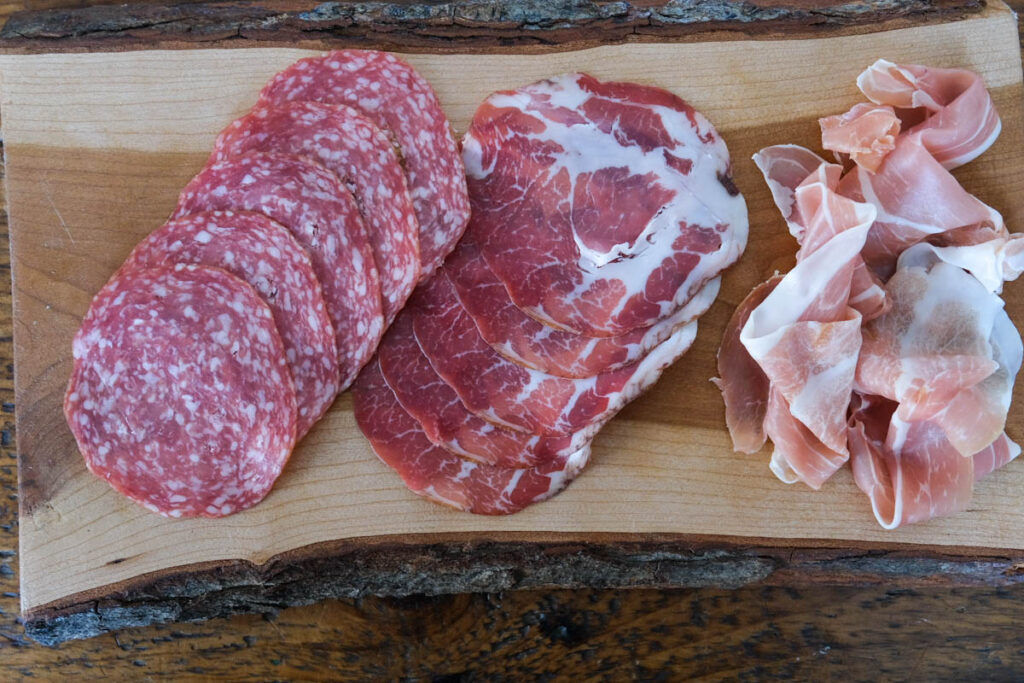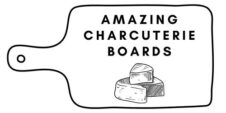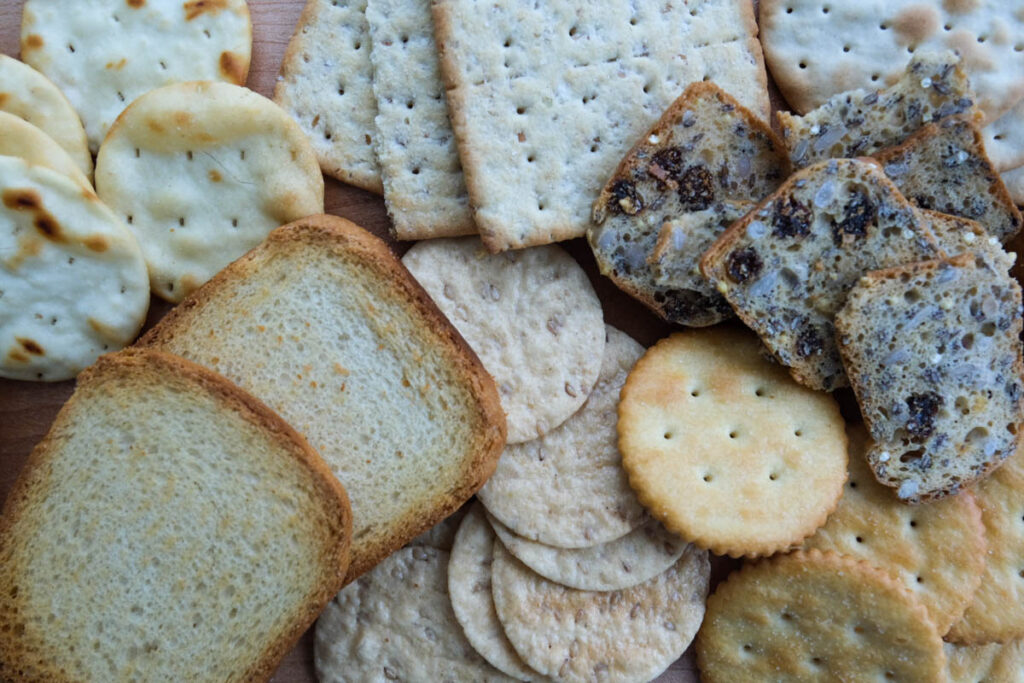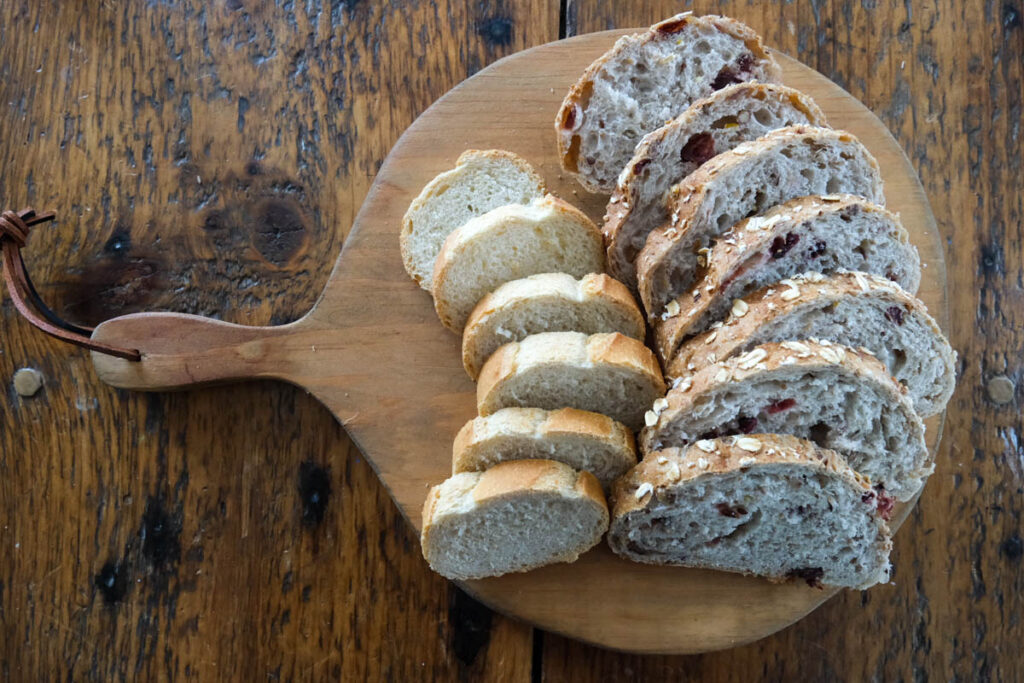Meat is the basic building block of traditional charcuterie boards and the word ‘charcuterie’ in fact derives from a French word for cooked meats. Unless you are making a specialty charcuterie board (like a fruit charcuterie board) or are making a vegetarian charcuterie board, you will likely be wondering what is the best meat for charcuterie board designs. This post will help you choose the best meat in terms of flavor and design elements. One of the best ways to serve meat is by making one or more meat flowers for your charcuterie board.
You can often find the best meats for charcuterie boards at your local grocery store, but you can also find links below to help you find specialty charcuterie meats
Learn more about the history of the Charcuterie Board.
Contents
List of the Best Meat for Charcuterie Board Designs
Below is a quick list of the best charcuterie meats. You can scroll down to see more details on which meat to select and how to use it in a charcuterie board.
- Ham (Prosciutto, Pancetta, Speck)
- Cured Sausage (peperoni)
- Meat Pate
- Salami
- Lard
- Smoked Meats
- Fish
What to Consider When Selecting Charcuterie Board Meat
When you are selecting the best meats for charcuterie boards, there are several things to consider. Read the brief descriptions below or scroll down for specific suggestions.
Taste
Taste is the biggest consideration when I’m deciding the best meat on a charcuterie board. You can to choose something delicious that also pairs well with the other ingredients on the charcuterie board. You will also want to balance the amount of meat on the board with the other ingredients. It’s possible to have a charcuterie board with just meat, but you will want to serve this with bread or crackers at a minimum.
Tradition
Meat is a traditional choice for a charcuterie board and some people will say that you can’t have a charcuterie board without meat. Traditionally this is true although the modern adaptation of charcuterie boards means that anything goes. The most traditional meat for a charcuterie board is ham or cured sausage.
Serving
Consider how you will serve the meat on the charcuterie board and how people will pick it up. Most charcuterie board foods are considered finger foods, but you can also use toothpicks or other serving tools. If you will be serving this at something fancy and don’t want to make a mess you may want to consider the harder charcuterie meats that are easier to pick up and don’t drip onto fancy dress clothes.
Design
How you choose to serve you charcuterie board meat is also important to consider. If you are looking for something fancy, you will want to include peperoni that can be made into a charcuterie board meat flower, or you can shape prosciutto into a delicate shape on your charcuterie board. As a strong design element, charcuterie board meat is often selected with looks in mind.
Variety
Especially if you are serving a large traditional charcuterie board, you will want to include a variety of different charcuterie board meats. You can often purchase a variety pack of charctuerie meats at the grocery store. Select various colors, tastes, and shapes to keep your charcuterie board interesting.

Details of the Best Meats for Charcuterie Board Designs
Ham
Ham is a key ingredient for many charcuterie boards and comes is several different forms. Below you can see the best ham for charcuterie boards.
Prosciutto
The word Prosciutto literally means ham in Italian. Prosciutto is served as either including prosciutto crudo (a raw, cured ham) and prosciutto cotto (or cooked ham). Originally made during the Roman times when people began curing meat to keep it from going bad, today, Prosciutto is a key ingredient across Italy. Prosciutto is made through a process of salting meat and then dried and left to age for 24-36 months.
The exact flavor of Prosciutto varies but it’s generally slightly sweet, flavorful, and salty. Served as paper-thin slices, Prosciutto is an excellent meat for charcuterie boards and one of the most popular.
You can purchase prosciutto in most grocery stores, or order online.
Pancetta
Pancetta is another product made from pork, specifically the pork belly. Like Prosciutto, it is cured in salt, but also includes other ingredients in the brine such as sugar and spices (black pepper, cloves, nutmeg, etc). Originating in Italy, pancetta is usually made into a log and sold either as a log, pre-sliced, or in cubes.
Similar in flavor to bacon, Pancetta the flavor is deeper and less smokey. Serve Pancetta on a charcuterie board either in slices or cubes.
Purchase Pancetta at your local meat shop or online.
Speck
This cured and smoked ham is made primarily in the Dolomite region of Italy near the Austrian border. In order to be called Speck, the meat must meet specific criteria which is regulated by the government. Speck is made from pork leg that has been fed and raised in a specific method. The meat is then cured with salt, pepper and other spices. After about three weeks the meat is lightly smoked and then ages for 22 weeks.
Speck is often served in Italian dishes, but is an excellent choice for meat on a charcuterie board. Since the taste is deeper and more dense than prosciutto it often is the main flavor or highlight of a charcuterie board. Speck is typically served in thin slices.
We find speck more difficult to find in our local grocery store, but you can purchase online – or head to Italy!
There are many other excellent ham products, many are specific to a certain region.

Cured Sausage
Just like ham, there are many different choices when it comes to including sausage on a charcuterie board. Salami is made from encased salted meats and can be made from any type of meat – beef and pork are the most common meats used in salami. The meat is placed within some sort of casing and then cured. The different types of salami come with different flavors and curing times. Genoa salami is more greasy than other hard salami and made only in Genoa Italy from pork.
Below you can see a few of the best options of different types of sausage:
- Pepperoni
- Genoa Salami
- Sopressata
- Chorizo
- Peppered Salami
- Cacciatore
- Finocchiona
Meat Pate
Vastly different from the ham and salami described above, meat pate is more of a spread to be used on a charcuterie board. You can purchase meat pate premade or it’s not difficult to make your own meat pate. This makes an excellent charcuterie board meat option and can be spread directly on crackers or bread. Serve meat pate at any temperature and pair it with cheese and fruit.
Pate is French and comes as either a paste or log. Pate can be made from almost any type of meat.
Try this pork Pate.
Lard
This one doesn’t sound that appealing but don’t jump to conclusions. Spiced lard is made from processing spiced pork meat. It looks like cheese and is served in a log and cut into slices. You can generally only find lard in a specialty shop or you can order it online.
Smoked Meats
In addition to the smoked meat for charcuterie board designs listed above, you can also find a wide selection of other smoked meats that make interesting additional to a charcuterie board. Smoked wild game in particular can be interesting added to a charcuterie board.
Fish
One of my favorite meat for Charcuterie Board designs is not actually meat, but fish. I love to add smoked salmon or other cured or even fresh fish to a charcuterie board.
Fish can be smoked, salted, pickled or served fresh. You can usually find several different fish options in your local grocery store or find some specialty items online. Serve fish on a charcuterie board with cream cheese, lemons, capers, crackers and thinly sliced bread. We also love to include vegetables on a charcuterie board with fish. Below you can see some different fish to serve on a charcuterie board.
See how to make a smoked salmon charcuterie board.
Conclusion for the Best Meat for Charcuterie Board Designs
The final conclusion is that there are many meats that work well on a charcuterie board. The most popular meats are often ham and salami, specifically meats made in Italy, France and other European countries. But don’t let that stop you from getting creating with your charcuterie board meat!














